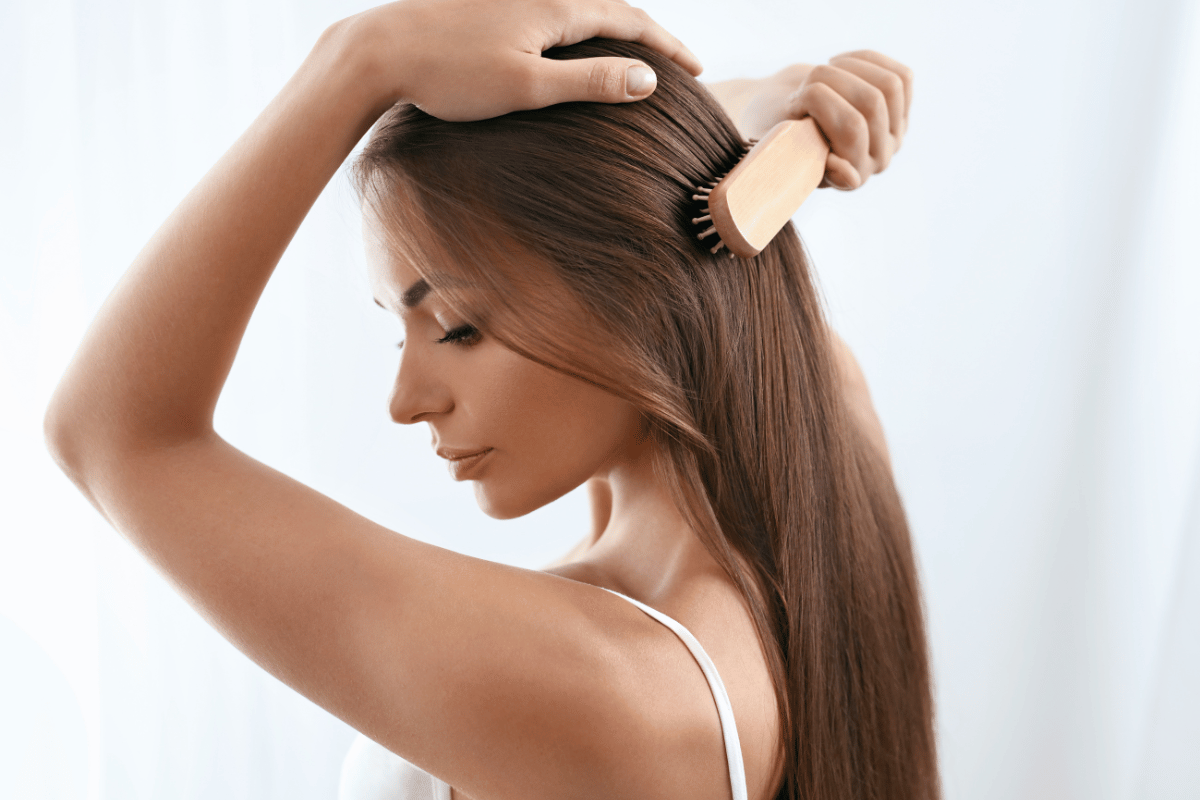Introduction: Bringing a new life into the world is a remarkable experience for any mother. However, the postnatal period often comes with its own set of challenges, including the notorious “postnatal shed.” Many women notice increased hair loss after giving birth, which can be distressing. But fear not! In this guide, we’ll explore effective tips and techniques to help you rebuild your hair after the postnatal shed, restoring its strength and vitality. Let’s embark on this hair-reviving journey together, armed with knowledge and a nurturing approach.
Understanding the Postnatal Shed
During pregnancy, hormonal changes cause a decrease in hair shedding, resulting in fuller, thicker locks. However, after giving birth, hormone levels normalize, and the delayed shedding process begins. This shedding, commonly known as the postnatal shed, can be alarming, with clumps of hair seemingly falling out. Rest assured, this is a temporary phase, and with the right care, you can rebuild and rejuvenate your hair.

- Embrace a Nutrient-Rich Diet: Fueling your body with essential nutrients is crucial for healthy hair growth. Consider incorporating these hair-nourishing foods into your diet:
- Protein-rich foods: Include lean meats, eggs, legumes, and dairy products to provide your hair with the building blocks it needs.
- Omega-3 fatty acids: Consume fatty fish, like salmon and sardines, as well as chia seeds and walnuts, to promote scalp health and nourish your hair follicles.
- Vitamins and minerals: Opt for a variety of fruits and vegetables, such as leafy greens, citrus fruits, and sweet potatoes, to ensure an adequate intake of vitamins A, C, and E, as well as iron and zinc.
Hair Care Routine
- Gentle Hair Care Routine: During the postnatal shed, it’s crucial to handle your hair gently to minimize breakage and protect fragile strands. Follow these tips for a nurturing hair care routine:
- Use a wide-toothed comb: After washing your hair, gently detangle it with a wide-toothed comb, starting from the ends and working your way up. This prevents unnecessary stress and breakage.
- Avoid heat styling: While it’s tempting to use heat tools for a quick fix, excessive heat can further damage weakened hair. Opt for air-drying whenever possible or use your ghd straightener on low heat settings to minimize heat damage.
- Choose mild hair products: Opt for sulfate-free shampoos and conditioners that are gentle on your scalp and hair. Look for products that promote hydration and nourishment to restore moisture balance.
- Scalp Massage and Stimulation: A relaxing scalp massage not only feels amazing but also stimulates blood flow to the hair follicles, promoting hair growth. Here’s how to do it:
- Using your fingertips, gently massage your scalp in circular motions for 5-10 minutes before shampooing. This increases circulation and encourages the delivery of nutrients to the hair roots.
- Consider incorporating essential oils into your massage routine. Rosemary, lavender, and peppermint oils are known for their hair-strengthening properties. Dilute a few drops in a carrier oil, such as coconut or jojoba oil, and massage it into your scalp.
Hair Treatments
- Hair-Boosting Treatments: In addition to a gentle hair care routine, incorporating nourishing treatments can aid in the recovery of your hair. Try the following:
- Deep conditioning: Treat your hair to a weekly deep conditioning mask or treatment. Look for products that contain ingredients like keratin and argan oil to restore moisture and strengthen your hair strands. Apply the treatment from mid-length to the ends, focusing on the areas most affected by the postnatal shed.
- Scalp exfoliation: Exfoliating your scalp helps remove dead skin cells and unclog hair follicles, creating an optimal environment for new hair growth. Use a gentle scalp scrub or create your own by mixing brown sugar with a nourishing oil like olive or almond oil. Massage the mixture onto your scalp in gentle circular motions, then rinse thoroughly.

- Hair masks: Indulge in a monthly hair mask that targets hair repair and rejuvenation. Look for masks with ingredients such as keratin, biotin, and vitamin E to strengthen your hair and promote growth. Apply the mask generously to your hair, focusing on the lengths and ends, and leave it on for the recommended time before rinsing.
- Patience and Self-Care: Rebuilding your hair after the postnatal shed requires patience and self-care. Remember that hair growth is a gradual process, and it may take several months for your hair to return to its pre-pregnancy state. In the meantime, prioritize self-care to reduce stress levels, as stress can contribute to hair loss. Engage in activities that help you relax, such as yoga, meditation, or spending time with loved ones. Taking care of your overall well-being will contribute to the health of your hair.
The postnatal shed may feel overwhelming, but with the right care and attention, you can rebuild and restore your hair’s strength and vitality. Embrace a nutrient-rich diet, adopt a gentle hair care routine, and pamper your hair with scalp massages and nourishing treatments. Remember, your hair straightener can be a valuable tool in your hair’s recovery journey. Be patient, practice self-care, and trust that your hair will bounce back, regaining its natural beauty. Enjoy this transformative phase of motherhood and embrace the joy of nurturing yourself and your hair.
















